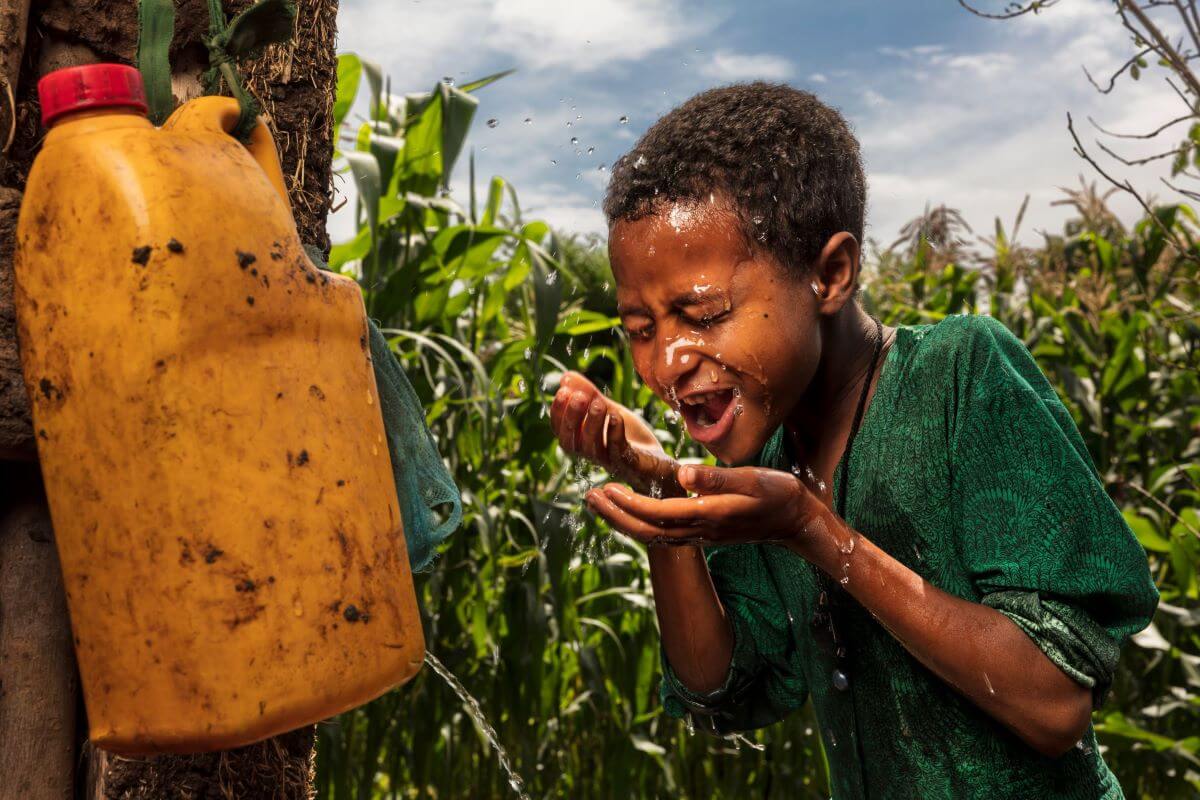International Trachoma Initiative

We believe better health is possible for everyone, everywhere and that all people deserve access to high-quality, safe, and effective healthcare solutions.
That’s why we’re proud of our longstanding antibiotic donation program with the International Trachoma Initiative (ITI), which is working to help eliminate trachoma, a neglected tropical disease (NTD) and leading infectious cause of blindness worldwide. Since the start of our donation program in 1998, Pfizer and ITI have partnered to deliver 1 billion doses of our donated antibiotic as part of the World Health Organization (WHO) recommended S.A.F.E. strategy1 to help treat and prevent trachoma across more than 40 countries.
A Social and Economic Burden
Trachoma is caused by the bacterium Chlamydia trachomatis, which after repeated infection scars the interior of the eyelid and causes it to turn inward, called trichiasis. The eyelashes scrape against a person’s eyes with each blink, causing painful ulcers and ultimately blindness if not treated with antibiotics or a simple surgical procedure.
There are 1.9 million people currently suffering visual impairment due to trachoma and 125 million people who remain at continued risk. It is both a cause and a consequence of poverty.2 Beyond the impacts of the disease itself, trachoma can severely impact the lives of generations – preventing many from being able to work, go to school, and provide for their loved ones.
A Coordinated Response
In 1998, Pfizer and the Edna McConnell Clark Foundation co-established ITI, which is dedicated to helping eliminate trachoma. As an independent program of the not-for-profit organization, The Task Force for Global Health, ITI manages the allocation and distribution of Pfizer’s donated antibiotic as part of the WHO recommended S.A.F.E. strategy. ITI collaborates with governmental and nongovernmental agencies at local, national, and international levels to implement the S.A.F.E. strategy for trachoma control:
- Surgery to treat the blinding stage of trachoma
- Antibiotics to clear infection
- Facial cleanliness
- Environmental improvement particularly improving access to water and sanitation
Steady Progress:
Thanks to long-term commitment and coordination across all sectors – including private, public, multilateral, and nonprofit – there has been impactful progress toward trachoma elimination:
- Since its inception, ITI has helped deliver 1 billion antibiotic doses, reaching more than 300 million people in 40 countries
- The global burden of trachoma has been reduced by 92% since 20023 and 18 countries have eliminated trachoma as a public health problem
- Additional ITI countries nearing elimination include Burkina Faso, Burundi, Eritrea, Guatemala, Guinea Bissau, Mauritania, Senegal, and Vietnam
- In June 2022, Pfizer announced the extension of our antibiotic donation program to 2030, enabling continued trachoma elimination programs in 18 countries globally
A Steadfast Commitment:
Through ITI, Pfizer is partnering with the global health community to expand access and strengthen health systems now and far into the future. There are dozens of partners working together to eliminate trachoma, including, governments, United Nations agencies, World Health Organization (WHO), United States Agency for International Development (USAID), CARE, CBM Global, FH1 360, Helen Keller International, International Coalition for Trachoma Control, Kilimanjaro Centre for Community Ophthalmology, Light for the World, Lions Clubs International, London School of Hygiene and Tropical Medicine, ORBIS International, RTI International, Sightsavers, The Carter Center, The Fred Hollows Foundation, Wilmer Eye Institute at Johns Hopkins, and World Vision.
To learn more about ITI, please visit www.Trachoma.org.
Sources:
- World Health Organization. Trachoma. “Who Response.” https://www.who.int/news-room/fact-sheets/detail/trachoma#:~:text=WHO%20adopted%20the%20SAFE%20strategy,Elimination%20of%20Trachoma%20by%202020.Last updated October 5, 2022. Accessed January 27, 2023.
- World Health Organization. Trachoma. "Distribution.” https://www.who.int/news-room/fact-sheets/detail/trachoma#:~:text=Distribution,1.4%25%20of%20all%20blindness%20worldwide. Last updated October 5, 2022. Accessed January 27, 2023.
- World Health Organization. Weekly epidemiological record. “WHO Alliance for the Global Elimination of Trachoma by 2020: Progress Report on Elimination of Trachoma, 2018.” https://apps.who.int/iris/bitstream/handle/10665/325910/WER9429-en-fr.pdf?sequence=1&isAllowed=y. 2019; 94(29)317-328. Published July 19, 2019. Accessed January 27, 2023.